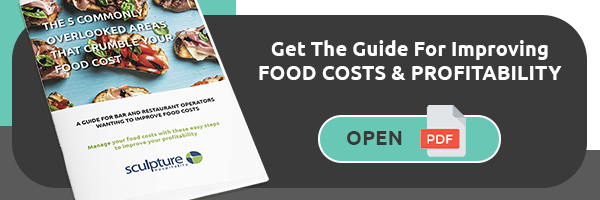Restaurants are all about customer experience and sometimes it’s easy to forget that a restaurant is a business, and any successful business needs good accounting.
In a typical restaurant, food and labour costs alone can account for close to 65 to 70 percent of all costs. Food costs are generally around 25 to 45 percent of all costs, and that’s why restaurant inventory management solutions are so crucial to your bottom line.
To successfully manage your restaurant inventory costs, it’s crucial that your business not only knows exactly how much you are spending when you order new stock - but also how much of that inventory you're actually using.
Wasted inventory is lost profits. In this blog, we’re going to discuss how you can use your inventory management system to track your exact food costs and actual usage, using variance data to find where in your business you are losing profits to wasted inventory.
What is food cost percentage?
To first understand food cost variance, we first need to understand what food cost percentage is.
Food cost is the ratio of a restaurant’s cost of ingredients (food inventory) and the revenue that those ingredients generate when the menu items are sold (food sales). Food cost is expressed as a percentage.
Example: If all of the ingredients you used to create your spaghetti and meatball dish cost $4 and you sell that dish on your menu for $10, then your food cost percentage would be 40 percent.
We recommend that the average restaurant keeps a food cost percentage between 28 and 35 percent for optimum restaurant inventory performance, but this percentage could change entirely depending on the type of business you run.
What is food cost variance?
In the restaurant industry, variance is a term used to describe the difference between what is expected and what actually happened. Variance occurs when your expenses or inventory usage (which we explain how to calculate in a recent blog, which you can read here), are either more or less than what you planned for.
Variance is simply the difference between how much you spend on a product, compared to the actual usage amount cost.
For example, if your actual inventory usage is $100 of cooked chicken but your point-of-sale (POS) system says you only sold $90 worth of cooked chicken, your variance will be -$10. That means $10 of cooked chicken is unaccounted for.
The calculation in this situation would be $10 (the variance amount)/$100 (the usage amount cost) - 10%.
So, why is this important for your restaurant’s food cost percentage? If you are paying a certain amount for each item in your inventory, then you expect to make a profit by selling it. If your inventory usage amount and your sales data don’t equate, then that’s going to push your overall food cost percentage up, making your menu items more expensive to create - and making a dent in your overall profits.
Using food cost percentage variance to drive profits at your restaurant
Variance takes the guesswork out of tracking your costs and usage. By knowing exactly where there is a discrepancy in your restaurant between inventory costs and inventory sold, your restaurant will be able to create a plan that saves your business a significant amount of money.
By using a restaurant inventory management system to automate this data and show you exactly which products are experiencing variance, your restaurant will have clear visibility into exactly where it is losing inventory (and in turn money).
You’ll see your revenue potential, and you’ll also see the items that are experiencing variance and preventing your business from achieving it.
Variance occurs from a range of mistakes, such as overportioning, overservice, inventory spoilage or even internal theft. Once you know exactly which products in your restaurant are experiencing variance, you’ll be able to train your employees to prevent it from happening in the future (as much as possible, there’s always going to be some variance in the restaurant industry).
Once this is solved, you’ll be able to accurately calculate your true food cost percentage and gain clear visibility into the profit you can expect to see for each and every product on your menu.
Want to learn more about the importance of calculating your restaurant’s variance, and how doing so can make your business more profitable? Contact Sculpture Hospitality today. We would love to answer any kitchen inventory management questions that you may have.

.jpg)










.jpg?width=520&height=294&name=Copy%20of%20Sculpture%20Hospitality_Owners_August%202020%20(18).jpg)